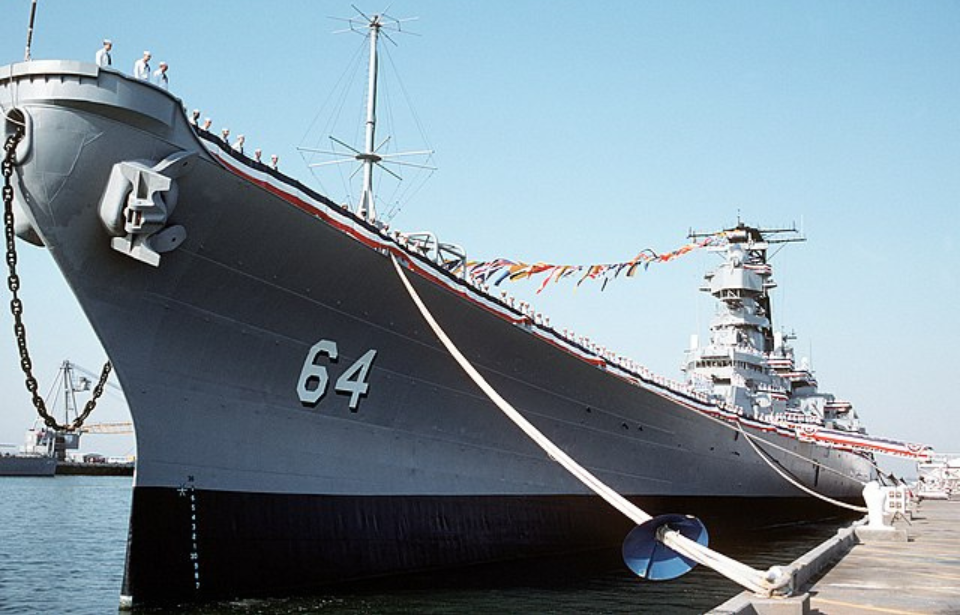The USS Wisconsin (BB-64), an Iowa-class ship, served the US Navy in intermittent periods from 1944-91. Commissioned as the second-to-last member of her class, she represented one of the final battleships constructed by the United States. Throughout her tenure, spanning the Second World War, Korea and the Gulf War, Wisconsin, affectionately known as “Wisky,” accumulated six battle stars and received a Navy Unit Commendation.
Construction of the USS Wisconsin (BB-64)
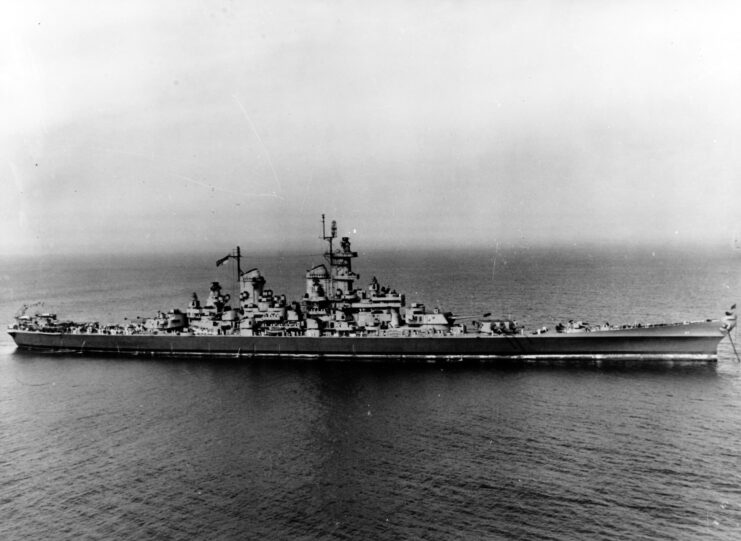
The initial plans for the USS Wisconsin were crafted in 1938 by the Preliminary Design Branch of the Bureau of Construction and Repair. Commencing construction on January 25, 1941, at the Philadelphia Navy Yard, she stood as the third of four Iowa-class “fast” battleships.
Launched on December 7, 1943, Wisconsin was commissioned the subsequent year. Following initial testing in Chesapeake Bay, the vessel embarked from Norfolk, Virginia for her shakedown cruise in the British West Indies. After this, she sailed through the Panama Canal to reach the Pacific.
USS Wisconsin (BB-64) specs
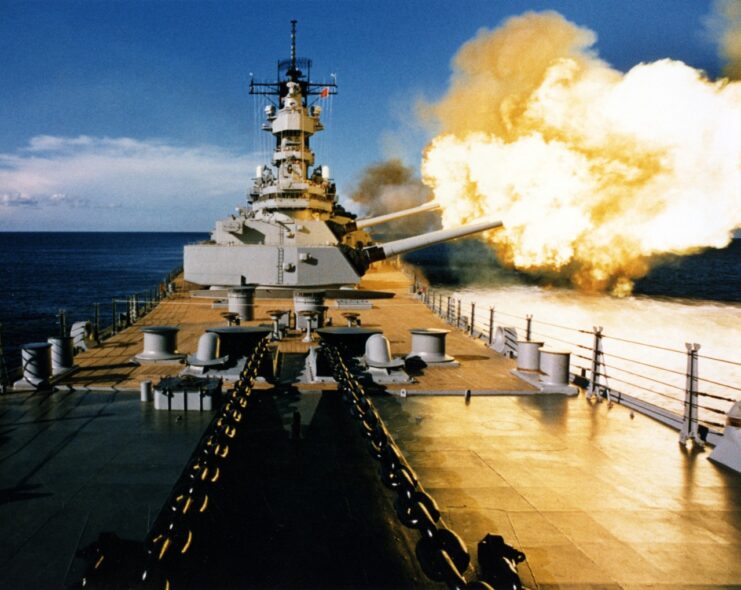
The USS Wisconsin‘s primary armament featured nine 16-inch/50 cal. Mk 7 guns distributed across three turrets, which could launch 2,700-pound armor-piercing shells over a distance of up to 20 miles. Complementing this firepower were twenty 5-inch/38 cal. guns housed in 10 turrets, along with forty-nine Oerlikon 20 mm cannons and eighty Bofors 40 mm anti-aircraft guns.
In the 1980s, Wisconsin underwent modifications that included the replacement of her anti-aircraft guns with Phalanx close-in weapon system (CIWS) mounts. Additionally, her five-inch/38 cal. gun count was reduced to 12, and she received armored box launchers for Tomahawk missiles, as well as quad cell launchers capable of firing Harpoon missiles.
Distinguishing both her and the USS Missouri (BB-63) from their sister ships, the USS Iowa (BB-61) and New Jersey (BB-62), were 14.5-inch-thick bulkheads, surpassing the latter’s 11.3-inch thickness. That being said, the remaining armor on Wisconsin remained identical to that of other Iowa-class battleships.
During the Second World War, Wisconsin carried floatplanes, like her sister ships. In the early Cold War era, a helicopter pad was added to the stern. As their service life approached its conclusion, each vessel in the class had the capacity to accommodate up to five unmanned aerial vehicles (UAVs).
Making waves in the Pacific during World War II
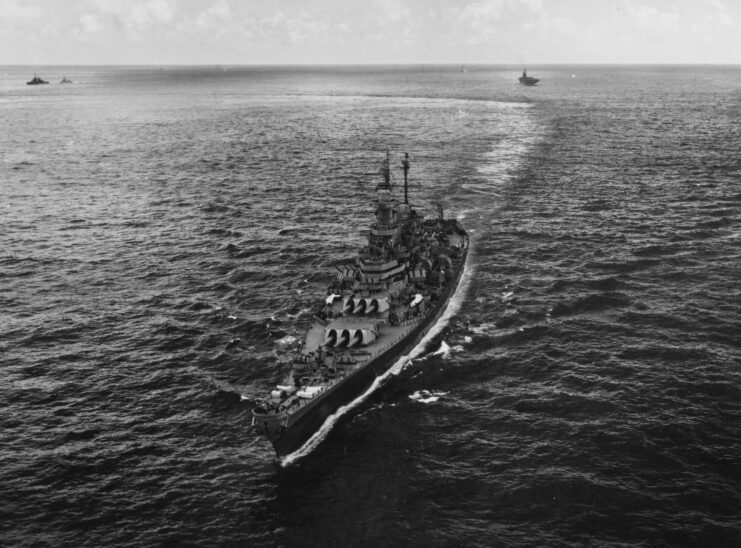
Departing the West Coast for Hawaii and the Caroline Islands, the USS Wisconsin joined Adm. William Halsey‘s Third Fleet on December 9, 1944. While she missed most of the Second World War, the battleship quickly entered combat shortly after joining the conflict.
In anticipation of the US invasion of Mindoro, Wisconsin became part of the Fast Carrier Task Force (TF-38) and was tasked with softening Japanese defenses ahead of American ground forces. During her initial operation, the task force encountered Typhoon Cobra, resulting in the sinking of three destroyers and damage to several ships, with hundreds of sailors killed, missing or injured. Somehow, Wisconsin emerged unscathed, reporting only two injured crewmen.
Subsequently, Wisconsin contributed to the occupation of Luzon, serving as a carrier escort and safeguarding vessels from air attacks. In February 1945, she joined the Fifth Fleet’s Task Force 58 (TF-58), advancing north to Japan. During this period, the battleship provided support and participated in troop landings on Iwo Jima. Additionally, she engaged shore-based targets in Hachinohe, Okinawa and Tokyo.
Wisconsin weathered another typhoon on June 4, emerging unharmed once again. On September 5, she sailed into Tokyo Bay, just three days after the formal surrender was signed aboard her sister ship, the USS Missouri.
Throughout her brief service in the Second World War, Wisconsin covered 105,831 nautical miles. After the conflict, she participated in Operation Magic Carpet, before being placed into the inactive Atlantic Reserve Fleet.
‘TEMPER TEMPER’
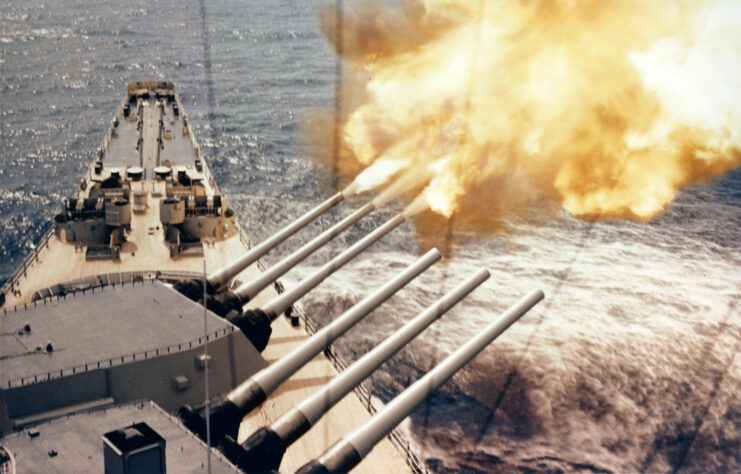
At the outset of the Korean War, the USS Wisconsin was recommissioned. After undergoing a shakedown and conducting two midshipmen training cruises, she embarked on her journey to the Pacific, departing from Norfolk on October 25, 1951.
Once again transiting through the Panama Canal, Wisconsin reached Japan on November 21 and assumed the role of Vice Adm. H.M. Martin’s flagship for the Seventh Fleet, relieving the USS New Jersey. Just five days later, she set sail for Korea, joining Task Force 77 (TF-77) and receiving the mission of shore bombardment.
On March 15, 1952, while engaging in a shelling operation against enemy positions in Songjin, Wisconsin faced a moment of provocation. Approaching perilously close to the shore, North Korean forces returned fire, their 155 mm shells striking the vessel, but causing no substantial damage, with only three sailors sustaining injuries.
In response, Wisconsin directed her formidable firepower toward the enemy and executed a devastating broadside, obliterating the North Korean artillery. In a lighthearted exchange, the USS Buck (DD-761), her escort, signaled, “TEMPER TEMPER.” Though this incident lacks extensive corroborative evidence, it remains a captivating anecdote from Wisconsin‘s wartime service.
The USS Wisconsin (BB-64) returns to the United States
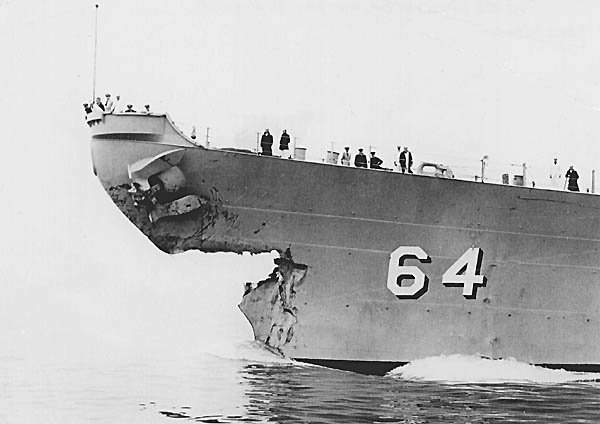
On April 1, 1952, the USS Wisconsin was relieved by the USS Iowa. Following the Korean War, she transitioned into roles as a training ship and flagship, participating in various exercises.
A significant incident occurred on May 6, 1956, when Wisconsin collided with the USS Eaton (DD-510) in heavy fog. Sustaining extensive damage to her bow, the battleship sailed to Norfolk Naval Shipyard for repairs. Remarkably, the replacement bow was swiftly sourced from the incomplete USS Kentucky (BB-66) and seamlessly installed onto Wisconsin within a matter of days.
By June 28, Wisconsin was fully repaired and ready to return to sea. However, she didn’t resume active duty until March 8, 1958, when she once again joined the US Navy’s Reserve Fleet.
Gulf War
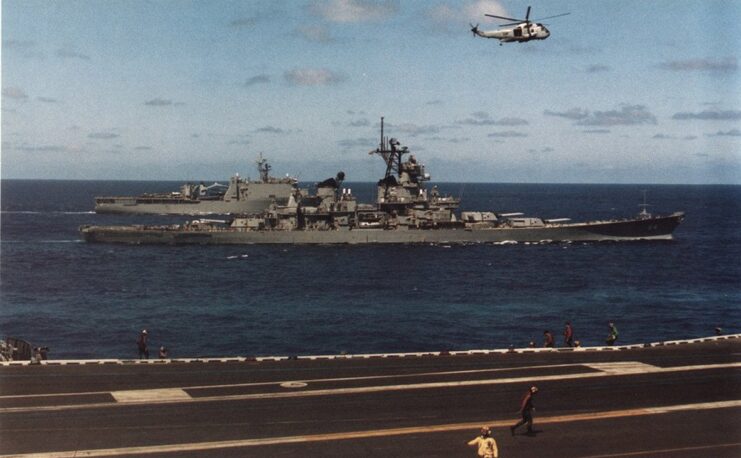
On August 1, 1986, the Wisconsin was reactivated as part of President Ronald Reagan and Navy Secretary John F. Lehman’s attempt to create a “600-ship Navy.” During the late ’80s, she underwent modernization and was recommissioned.
Following the Iraqi invasion of Kuwait, US naval forces were deployed as part of Operation Desert Shield. When Operation Desert Storm began, Wisconsin and the USS Missouri launched Tomahawk strikes against Iraq. They were some of the first ships to use cruise missiles during the Gulf War, with Wisconsin serving as the Tomahawk Land Attack Missile (TLAM) strike commander. The conflict also saw the battleship, for the first time since 1952, provide gunfire support.
More from us: USS Harder (SS-257): The WWII-Era Submarine That Took Out Five Enemy Destroyer In Four Days
Over the course of the war, both Wisconsin and Missouri fired more than one million pounds of ordnance on Iraqi targets. With the end of the conflict, all four Iowa-class battleships were decommissioned.
